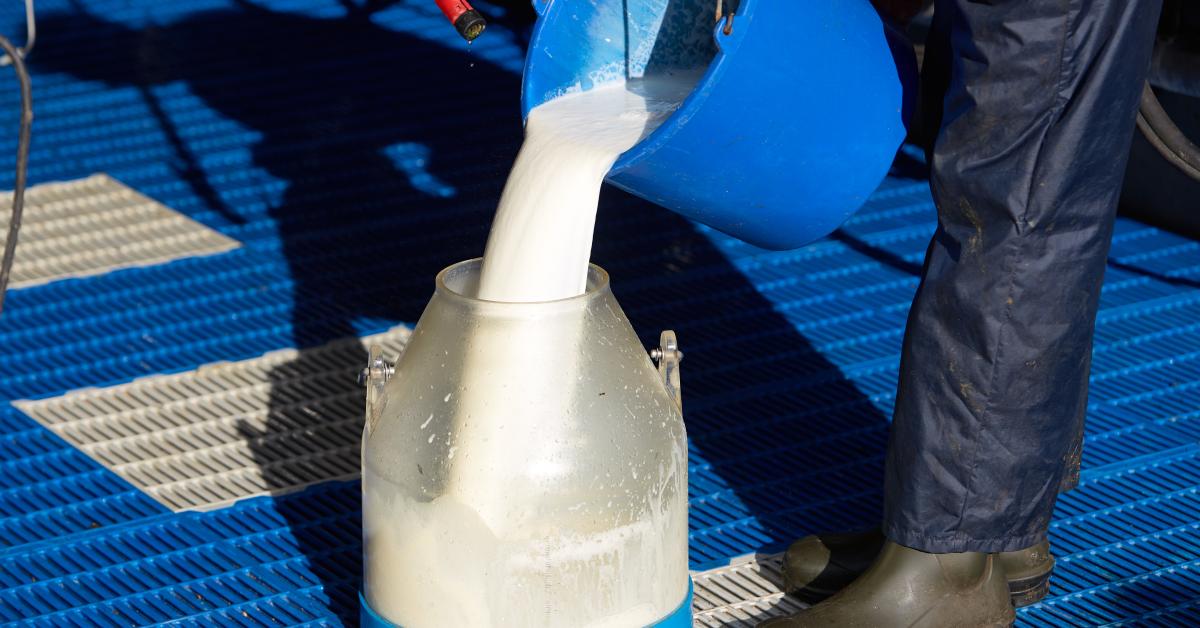We support our Publishers and Content Creators. You can view this story on their website by CLICKING HERE.

President-elect Donald Trump campaigned in part on the promise to “Make America Healthy Again.”
That pledge, initiated by Robert F. Kennedy Jr.,Trump’s nominee to run the Department of Health and Human Services, attracted voters engaged in a growing national battle over our food. They claim the government is making it hard to buy food that’s safer and more nutritious while force-feeding us a diet that’s unhealthy and causing chronic diseases.
One flashpoint in the debate is unpasteurized or raw milk, which is growing in popularity, particularly among conservatives. The government and some consumer advocates say the milk can cause serious illness and should be avoided. But raw milk advocates say it has scientifically proven benefits.
“[Raw milk] strengthens the gut wall, kills pathogens,” says Sally Morell, the owner of P.A. Bowen Farmstead in Brandywine, Maryland. “And then in human studies – and these were done in Europe in the last couple of decades – we have less asthma, less respiratory disease, and less allergies. Fewer allergies in children brought up on raw milk.”
More states have been legalizing the sale of raw milk products – responding to growing consumer demand. But in Maryland, there’s still a ban on selling raw milk products for people to eat and drink. Morell sells her raw milk products with a label that says for pet consumption only, avoiding the issue of regulation.
“Recently there’s been this big push to tell people that raw milk is dangerous,” Morell said. “But we have probably 20 million people drinking raw milk in this country who know that that’s not true.”
Sarah Sorscher has a different view. She’s with the Center for Science in the Public Interest, a food watchdog group. She’s against the growing push to put raw milk on more of America’s grocery shelves.
“It’s become an issue recently because a number of states are passing laws that open up the market for retail sales of raw milk,” she said. “But when we’re talking about putting it on grocery store shelves, you have consumers who may have no experience with the product being exposed to that risk, and we’re going to see more illness, more hospitalization, and potentially more deaths as a result of these policies.”
Sorscher says milk in its raw state contains bacteria that can be harmful, like pathogenic E. coli.
“When they looked at the amount of raw milk that’s being sold versus pasteurized, and they compare that to the outbreak rate, they found that raw milk is 150 times more likely to cause an outbreak than pasteurized milk,” she said. “So there’s certainly a potential to have more illness if the sale is expanded.”
Morell disagrees. She points to the largest milk-related outbreak in American history. It was in 1985 and caused by Salmonella in pasteurized, not raw, milk. A single Illinois processing plant sickened nearly 200,000 people and killed 48.
After a widespread outbreak from pasteurized milk cheese in Canada in 2008, a study noted that Europe found bacteria-contaminated cheese was more often linked to pasteurized milk than raw milk.
Small food producers ask why the government isn’t issuing warnings and press releases about pasteurized milk or other government-approved foods after they make people sick.
The deadliest known U.S. food outbreak in the past three and a half decades was in 2011, caused by bacteria in cantaloupes. It killed 33.
More recently, fears of listeria bacteria recently led to a massive recall of 11.7 million pounds of meat including at hundreds of schools.
Also this year there have been recalls of ice cream and Planters Nuts over listeria worries. Listeria in sliced deli meat killed at least 10 people and sent 59 to the hospital. E. coli in walnuts sent 7 to the hospital. And salmonella in cucumbers sickened 449 people.
For more, watch “Full Measure with Sharyl Attkisson” and check out Sharyl’s new bestseller “Follow the Science: How Big Pharma Misleads, Obscures, and Prevails.”

 Conservative
Conservative  Search
Search Trending
Trending Current News
Current News 





